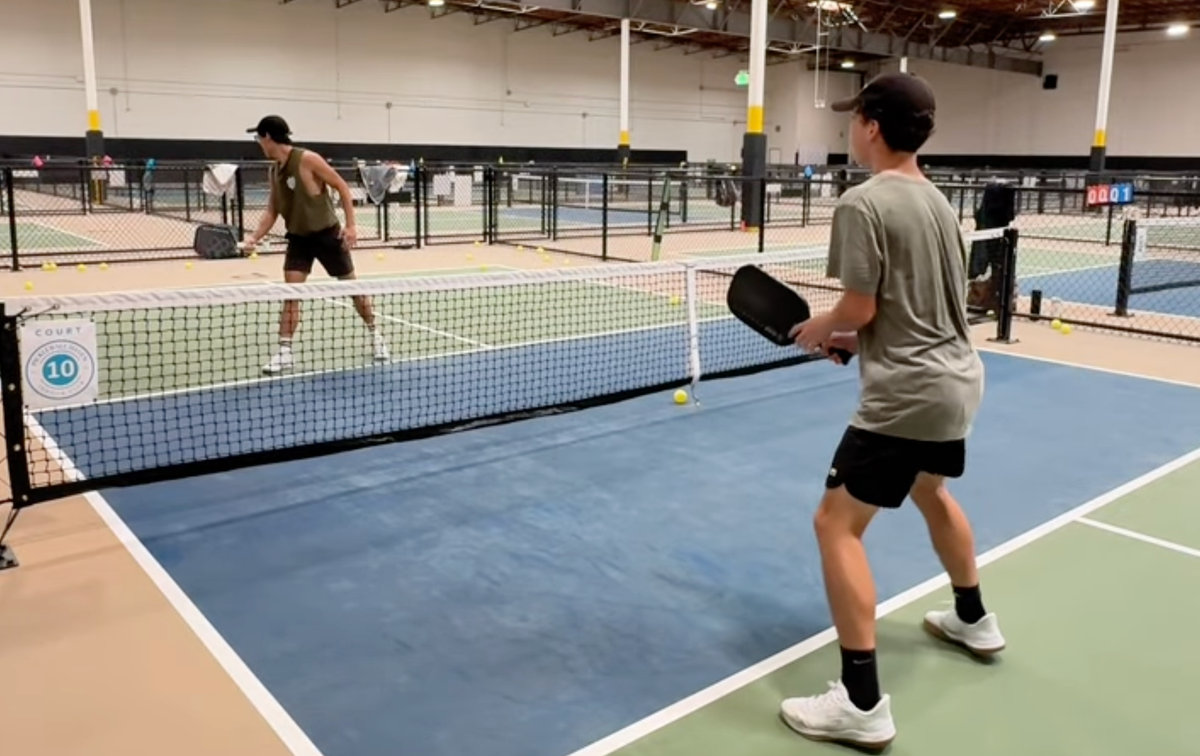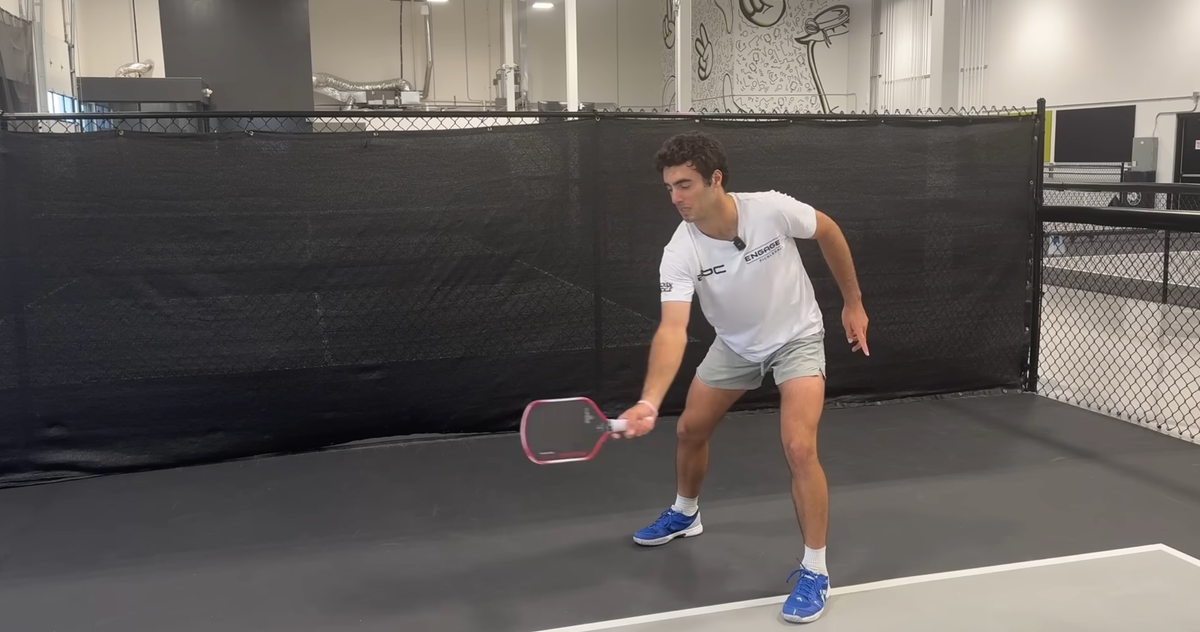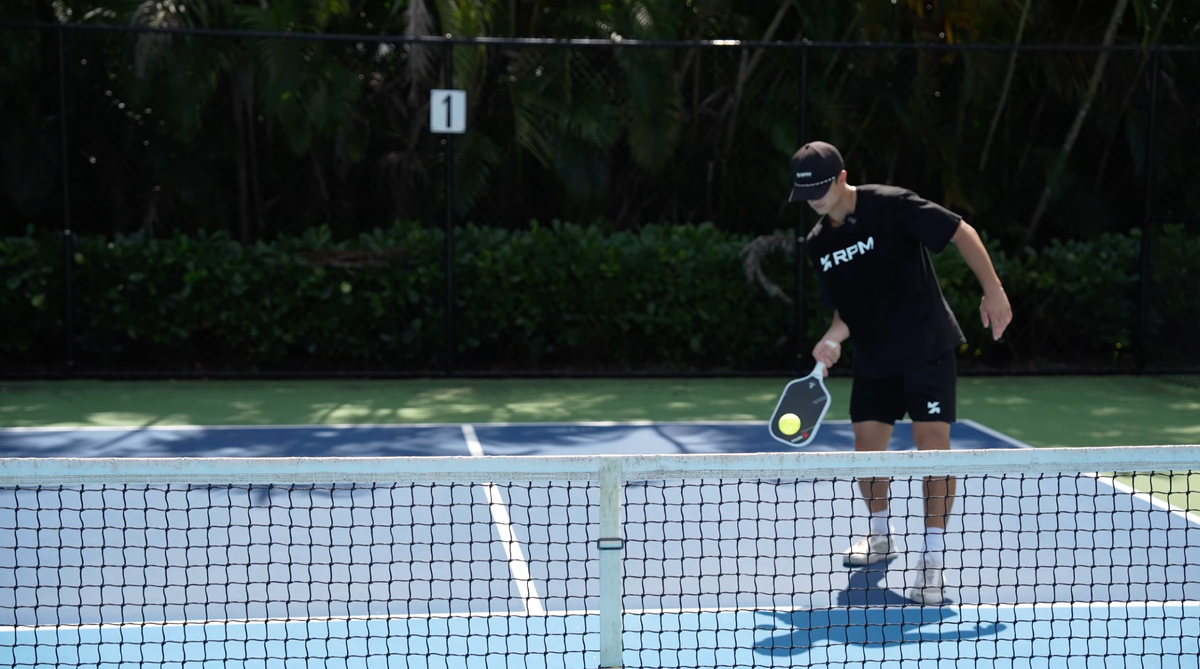
Hey guys, it’s Kyle from ThatPickleballGuy. If you struggle with backhand dinks—and I say this with love—whether you’re missing dinks high or hitting them into the net, this is the article for you. I’m going to teach you how to hit a one-handed backhand dink so you stop missing so much. Stick around until the end because I’ve got an advanced tip that’ll be helpful when you’re practicing your backhand dinks.
Positioning is Key
The first thing to focus on is positioning. If you’re not well-positioned at the kitchen line, you don’t stand a chance at becoming a good backhand dinker. Many players are sporadic at the kitchen line—moving forward and backward—which causes them to lose balance. And in pickleball, being off-balance is a major disadvantage. When you retreat from the kitchen line, you lose your ability to hold the line and be aggressive when your opponent pops the ball up.
Now, let’s talk about the technique for a solid backhand dink. I’m a righty, so I’ll be speaking from the perspective of someone playing on the left side of the court. If you’re a lefty on the right side, just reverse the instructions.
Step 1: Stance and Footwork
The first big aspect of technique is footwork. You need to be in a strong, athletic stance. Standing up straight won’t help—you need to be low and ready. That’s your foundation for any effective dink.
Next is the sidestep. Start by practicing a sidestep (Figure 1) repeatedly to get the hang of it. Footwork comes first; we aren’t even talking about your arm yet. If you master the sidestep, you’re on your way.

After that, we have the drop step. A drop step is a diagonal movement that helps when you can’t take the ball out of the air and need to let it bounce. It’s a crucial part of staying balanced. Remember, if you’re using a drop step, you’re likely in a defensive position, so take the ball back to the middle to reduce the chances of your opponent attacking.
As you improve, you’ll need to learn sliding in combination with your sidesteps and drop steps (Figure 2). Your opponent will move you around, so you need to be able to slide while sidestepping or drop-stepping to cover the court more efficiently. Sliding helps you stay balanced while handling tricky shots.
For example, when the ball is hit to your side, practice sliding and stepping to maintain your stance and balance. Here’s how it looks in action: slide in, sidestep, or slide and drop step, depending on the shot.

Upper Body: Grip and Arm Control
Let’s move to the upper body. Start with your grip—I recommend the Continental grip, which is like a handshake grip. This is the grip I use, and most pros use it too. While some players experiment with other grips, I suggest starting with Continental for consistency.
One of the biggest mistakes I see is players using too much wrist movement in their backhand dinks. Keep your wrist firm and your arm straight. I like to lock my wrist in place, which reduces unnecessary movement and gives you more control.
Dayne Gingrich, a senior pro player, describes the arm as a lever. If you watch someone like Jay Devilliers, you’ll notice how he keeps his arm straight during dinks. Keeping your arm straight and your wrist locked will significantly improve your accuracy and consistency.
Paddle Face Control
Finally, let’s talk about paddle face positioning. Your paddle face should be slightly open. Combine this with your footwork—sidesteps, drop steps, and sliding—and you’ll have a smooth and consistent dinking game.
Bonus: The Slide and Cross Technique
Here’s a bonus tip—the slide and cross technique is more advanced and isn’t typically taught to beginners because it can throw you off balance. Players like Ben Johns use this footwork to recover when they’re pulled wide on the court. It’s all about surviving the shot and getting back into a strong position.
After hitting the ball with this technique, you need to push off your foot and return to the kitchen line as quickly as possible. Staying at the kitchen line keeps you in a dangerous position, ready for a put-away shot.
Final Thoughts
Now you know the basics—stance, sidestep, drop step, slide, and the advanced slide and cross. But the game is won at the kitchen line, not the baseline. Focus on reducing errors and moving your opponent around to create offensive opportunities.
Work on this for just five minutes before your next rec game. Do this consistently for 14 days, and you will improve.
Think you know pickleball inside and out? Challenge yourself with ThatPickleball IQ Test and see if you can score a perfect 10 out of 10!
See you guys next time 👊🏻👊🏻
Anuncie Aqui / Advertise Here
Sua marca para o mundo Pickleball! / Your brand for the Pickleball world!

 English
English  Spanish
Spanish  Portuguese
Portuguese  German
German  Italian
Italian  Japanese
Japanese  French
French  Polish
Polish  Russian
Russian  Netherlands
Netherlands  Hungarian
Hungarian  Turkish
Turkish  Videos
Videos  Pickleball Portal
Pickleball Portal









 English (US) ·
English (US) ·  Portuguese (BR) ·
Portuguese (BR) ·